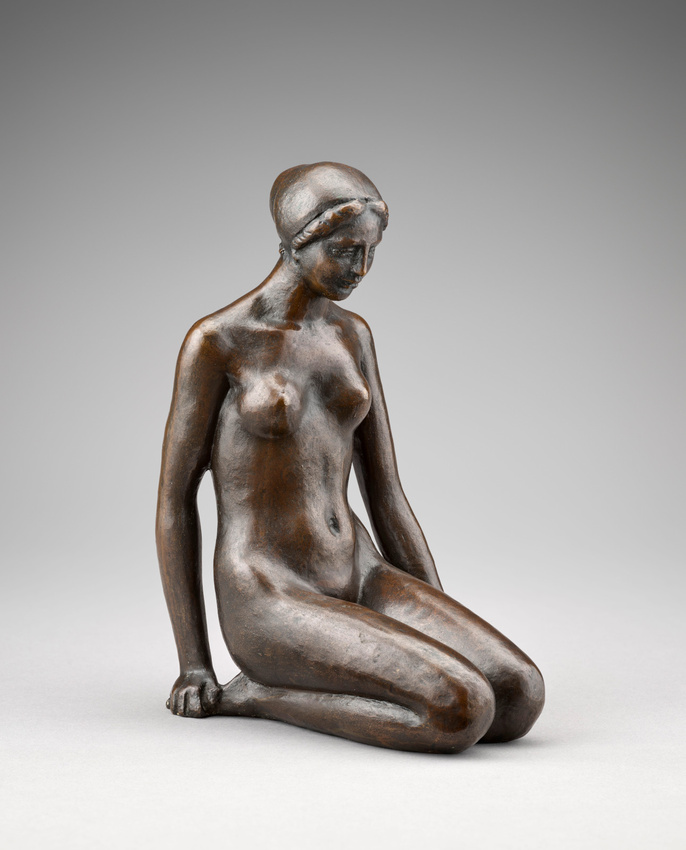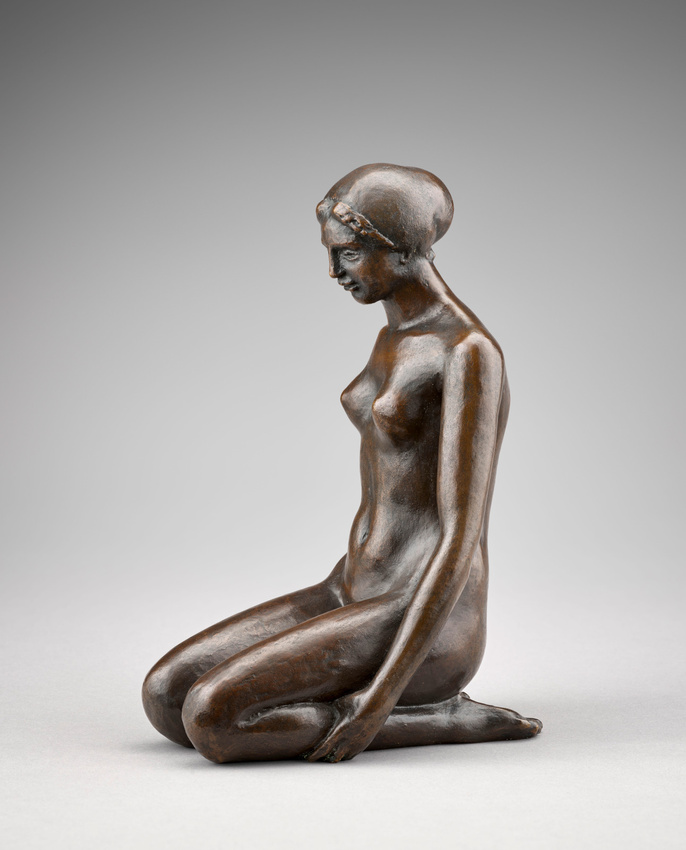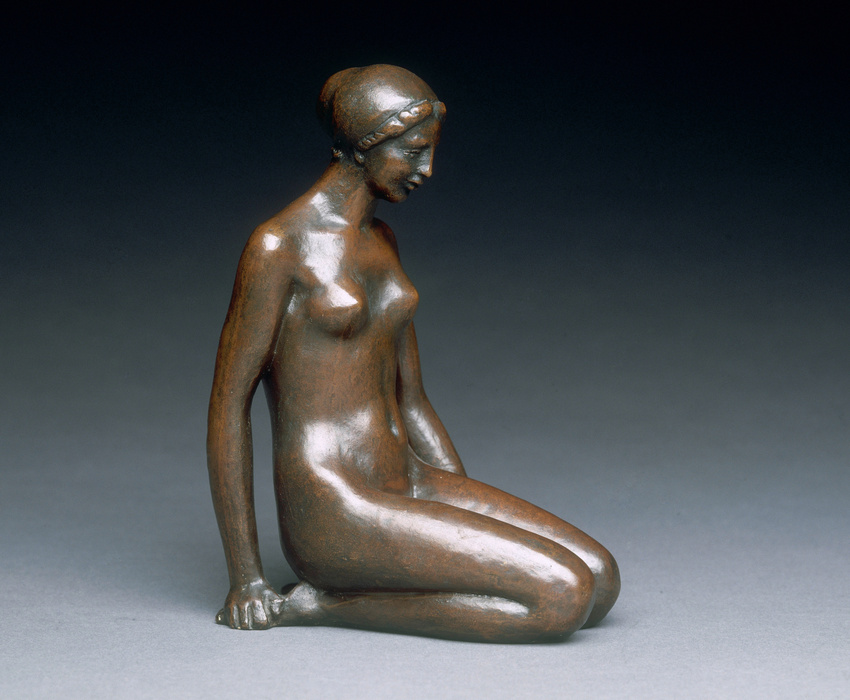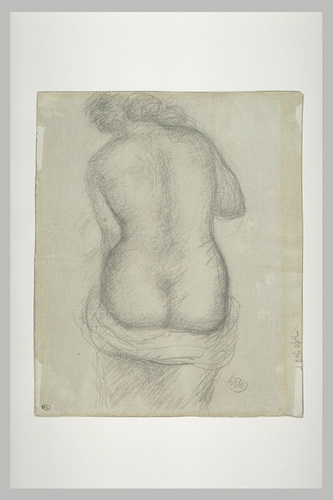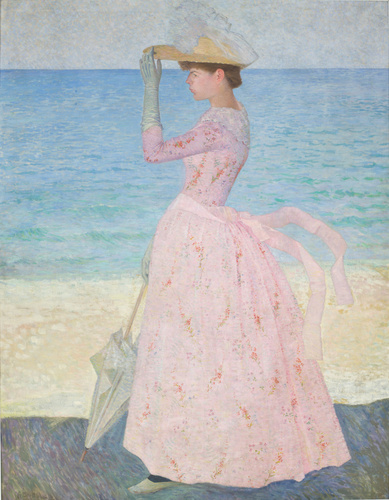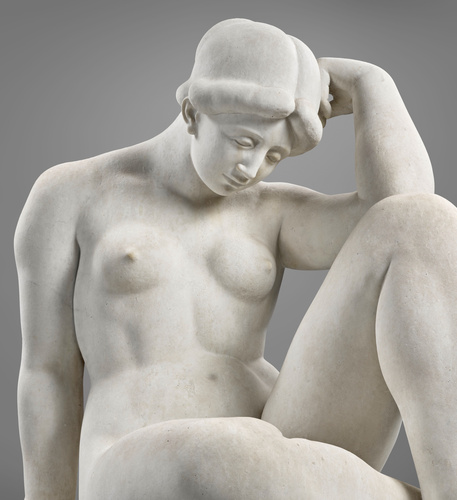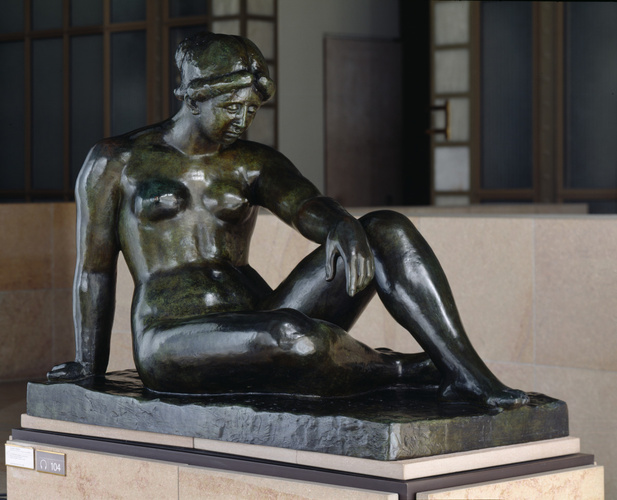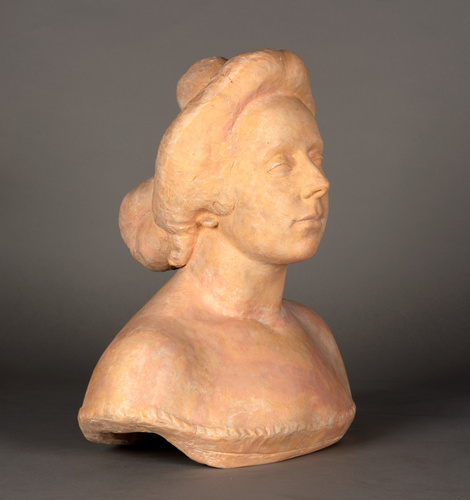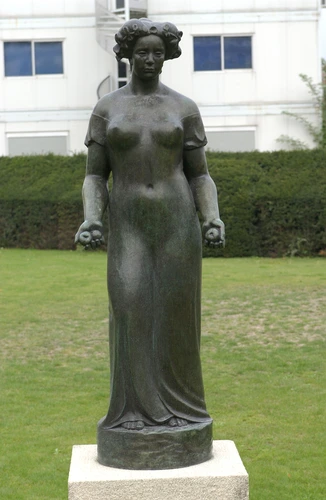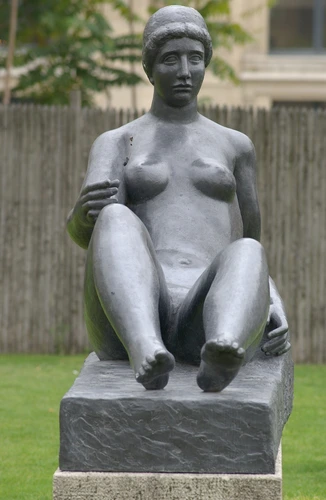Femme assise sur ses talons
Maillol, who had initially devoted himself to painting, tapestry and ceramics, turned to sculpture in 1895. Femme assise sur ses talons was one of his first sculptures modelled from clay. Later he would produce bronzes from it such as this one.
At first, Maillol confined himself to small scale figures. It was only after an exhibition at the art dealer's Ambroise Vollard in 1902 that he began to produce more ambitious formats like The Mediterranean. This proved to be a successful move as Maillol's sculptures, even the smallest, imposed their monumentality and classicism.
The fact remains that these first three-dimensional studies of the female body still reveal elements of the art of the Nabis, simplistic and without embellishment. They also heralded a return to order and the taste for smooth surfaces that appeared at the turn of the century, as a reaction against Rodin's turbulent art.
